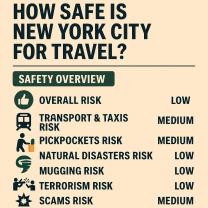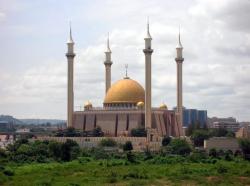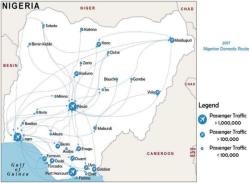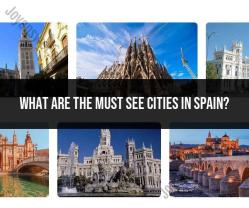What are dark tourism sites?
Dark tourism sites are locations associated with death, disaster, tragedy, or historical atrocities that attract visitors seeking to understand and engage with the darker aspects of human history. These sites often serve as memorials, museums, or preserved areas that bear witness to past events. While some dark tourism sites focus on natural disasters, others are linked to human-made tragedies, war, and historical atrocities. Here are notable examples of dark tourism sites:
Auschwitz-Birkenau Concentration Camp (Poland):
- Auschwitz-Birkenau, the largest Nazi concentration and extermination camp during World War II, is now a memorial and museum. Visitors can tour the site to learn about the Holocaust and pay respects to the millions of victims.
Chernobyl Exclusion Zone (Ukraine):
- The Chernobyl Exclusion Zone encompasses the area affected by the 1986 Chernobyl nuclear disaster. Tourists can explore the abandoned city of Pripyat and witness the long-term effects of the nuclear meltdown.
Hiroshima Peace Memorial Park (Japan):
- Dedicated to the victims of the atomic bombing of Hiroshima during World War II, this park includes the iconic Atomic Bomb Dome and serves as a symbol of peace and remembrance.
Ground Zero (New York, USA):
- The site of the World Trade Center towers, destroyed during the 9/11 terrorist attacks, is now a memorial and museum. Visitors can learn about the events of 9/11 and pay tribute to the lives lost.
Tuol Sleng Genocide Museum (Cambodia):
- Formerly a high school turned into a prison by the Khmer Rouge regime, Tuol Sleng is now a museum documenting the atrocities committed during the Cambodian genocide.
Pompeii (Italy):
- While not intentionally a dark tourism site, Pompeii and Herculaneum were ancient Roman cities destroyed and buried by the eruption of Mount Vesuvius in 79 AD. The preserved ruins offer a glimpse into daily life during the Roman Empire.
Memorial and Museum Sachsenhausen (Germany):
- Sachsenhausen was a concentration camp during the Nazi era. The memorial and museum provide insights into the history of the camp and the suffering endured by prisoners.
Kigali Genocide Memorial (Rwanda):
- Dedicated to the victims of the Rwandan Genocide in 1994, this memorial and museum offer a sobering account of the events that took place and the impact on the Rwandan people.
The Killing Fields (Cambodia):
- The Killing Fields, such as Choeung Ek, are mass grave sites where victims of the Khmer Rouge regime were executed and buried. They serve as a somber reminder of Cambodia's tragic history.
Oradour-sur-Glane (France):
- The village of Oradour-sur-Glane was the site of a massacre by the Waffen-SS in 1944. The preserved ruins stand as a memorial to the victims of this wartime atrocity.
These dark tourism sites can provide educational experiences, foster remembrance, and contribute to the understanding of historical events. However, visiting such places requires sensitivity and respect for the victims and their families, as well as a recognition of the ethical considerations surrounding tourism at these sites.
1. Definition of Dark Tourism and Its Characteristics
Dark tourism, also known as thanatourism or grief tourism, refers to the practice of visiting sites associated with death, tragedy, or disaster. These sites can include battlefields, concentration camps, prisons, execution grounds, and places where natural disasters or accidents have occurred.
Dark tourism is often motivated by a desire to learn about history, connect with the past, or pay respects to those who have suffered. However, it can also be driven by morbid curiosity, a fascination with the macabre, or a desire for thrills and excitement.
2. Motivations and Psychological Factors Driving Dark Tourism
Individuals engage in dark tourism for a variety of reasons, often driven by a combination of psychological factors:
Morbid curiosity: Some people are drawn to the dark and mysterious aspects of history, and they find themselves fascinated by sites associated with death and tragedy.
Learning and understanding: Dark tourism can provide a unique opportunity to learn about history, gain a deeper understanding of past events, and appreciate the resilience of the human spirit.
Empathy and connection: Visiting dark tourism sites can foster empathy and connection with those who have suffered, allowing individuals to pay their respects and honor their memories.
Personal catharsis: For some, dark tourism can serve as a form of personal catharsis, allowing them to confront their own fears and mortality.
Thrill-seeking: Dark tourism can offer a sense of adventure and excitement, providing a unique and adrenaline-pumping experience.
3. Ethical Considerations and Controversies Surrounding Dark Tourism
Dark tourism raises a number of ethical concerns and potential controversies:
Exploitation of suffering: Critics argue that dark tourism exploits the suffering of others, turning tragedy into a commercialized spectacle.
Insensitivity to victims: Some fear that dark tourism can be insensitive to the victims of tragedies and their families, causing further pain and distress.
Commodification of tragedy: There is concern that dark tourism can trivialize tragedy, reducing it to a mere commodity for entertainment or profit.
Disrespect for historical sites: Overcrowding and improper behavior by tourists can damage fragile historical sites and disturb their somber atmosphere.
4. Examples of Prominent Dark Tourism Sites Around the World
Numerous dark tourism sites exist worldwide, attracting visitors interested in exploring the darker side of history:
Chernobyl, Ukraine: The site of the 1986 nuclear disaster offers tours of the abandoned power plant and the surrounding contaminated zone.
Auschwitz-Birkenau, Poland: The former Nazi concentration camp serves as a poignant reminder of the Holocaust, with preserved barracks, gas chambers, and crematoria.
Pompeii, Italy: The ancient Roman city buried by the eruption of Mount Vesuvius in 79 AD provides a glimpse into a frozen-in-time civilization.
Hiroshima Peace Memorial Park, Japan: Commemorating the atomic bombing of Hiroshima in 1945, the park features the iconic A-bomb dome and museums dedicated to peace education.
Tuol Sleng Genocide Museum, Cambodia: The former Khmer Rouge prison, now a museum, exhibits the horrors of the Cambodian genocide.
Impact of dark tourism on local communities, economies, and historical preservation efforts
Dark tourism can have a significant impact on local communities, economies, and historical preservation efforts:
Positive Impacts:
Economic benefits: Dark tourism can generate revenue for local businesses, creating jobs and supporting the local economy.
Education and awareness: Dark tourism can raise awareness of historical events and promote education about important social issues.
Cultural preservation: Dark tourism can contribute to the preservation and restoration of historical sites and cultural heritage.
Potential Challenges:
Overtourism: Excessive visitor numbers can strain local infrastructure, damage fragile sites, and disrupt the tranquility of communities.
Sensitivity and respect: Dark tourism requires careful management to ensure respectful treatment of historical sites and sensitivity to victims' families.
Representation and interpretation: The portrayal of historical events through dark tourism must be accurate, balanced, and avoid glorification or sensationalism.
Overall, dark tourism presents a complex interplay of benefits and challenges. It is crucial to strike a balance between promoting tourism and preserving historical sites while ensuring respectful treatment of victims and their families. By acknowledging the ethical considerations and addressing potential issues, dark tourism can contribute to education, cultural preservation, and economic development while maintaining sensitivity and respect for the past.











